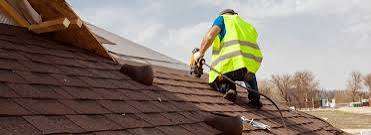Your roof is your home’s first line of defense against the elements. Over time, however, even the most durable roof can succumb to wear and tear. Understanding the signs that a new roof installation is necessary can save you from costly repairs down the line. This article explores the signs your roof needs replacing, the process of new roof installation, and factors to consider when making this important decision.
Beyond the Patch: Signs You Need a New Roof
Several indicators suggest it’s time to consider a new roof installation instead of repairs:
- Age: Asphalt shingle roofs typically last 15-20 years, while metal roofs can last upwards of 40-70 years. If your roof nears the end of its lifespan, consider a new installation.
- Visible Damage: Missing or cracked shingles, curling edges, or significant granule loss are signs of extensive wear and tear, warranting a full replacement.
- Leaks: Persistent leaks indicate compromised roof integrity. Patching might be a temporary solution, but a new roof installation offers a long-term fix.
- Interior Damage: Water stains on ceilings or mold growth in the attic are signs of leaks that have penetrated the interior, necessitating a new roof and potential repairs inside the house.
- Sagging Roof Deck: A sagging roof deck signifies structural problems that require immediate attention and likely a complete bold replacement.
Beyond the Tear-Off: The New Roof Installation Process
The new roof installation process typically involves these steps:
- Project Planning and Permitting: A roofing contractor will inspect your roof, discuss options, and obtain necessary permits.
- Roof Removal: The existing roof is carefully removed, and debris is hauled away.
- Inspection and Repairs: The roof decking is inspected for damage and repaired if necessary.
- Underlayment Installation: A waterproof barrier is installed to protect the roof deck from moisture infiltration.
- New Roof Installation: The chosen roofing material (shingles, metal, etc.) is installed according to manufacturer specifications.
- Flashing and Ventilation: Flashing is installed around roof penetrations, and proper ventilation is ensured to prevent moisture buildup.
- Cleanup and Inspection: The worksite is thoroughly cleaned, and the final roof is inspected to ensure proper installation.
Beyond the Cost: Factors to Consider Before Installation
Before embarking on a new roof installation project, consider these factors:
- Roof Material: Choose a material that suits your budget, aesthetic preferences, and local climate. Asphalt shingles are affordable, while metal roofs offer superior durability.
- Roof Pitch: The angle of your roof slope will influence the type of material suitable for installation.
- Multiple Estimates: Obtain quotes from several qualified roofing contractors to compare pricing and services offered.
- Warranties: Ensure the chosen contractor offers labor and material warranties for peace of mind.
- Roofing Contractor Expertise: Choose a licensed and insured contractor with experience in installing your chosen roofing material.
Conclusion
A new roof replacement is an investment that protects your home from the elements for years to come. By recognizing the signs that necessitate a replacement, understanding the installation process, and carefully considering the factors involved, you can make an informed decision that safeguards your home’s structural integrity and increases its value. So, don’t wait until leaks or major damage occur. If your roof shows signs of wear and tear, consider a new roof installation – a worthwhile investment in the security and longevity of your home.




